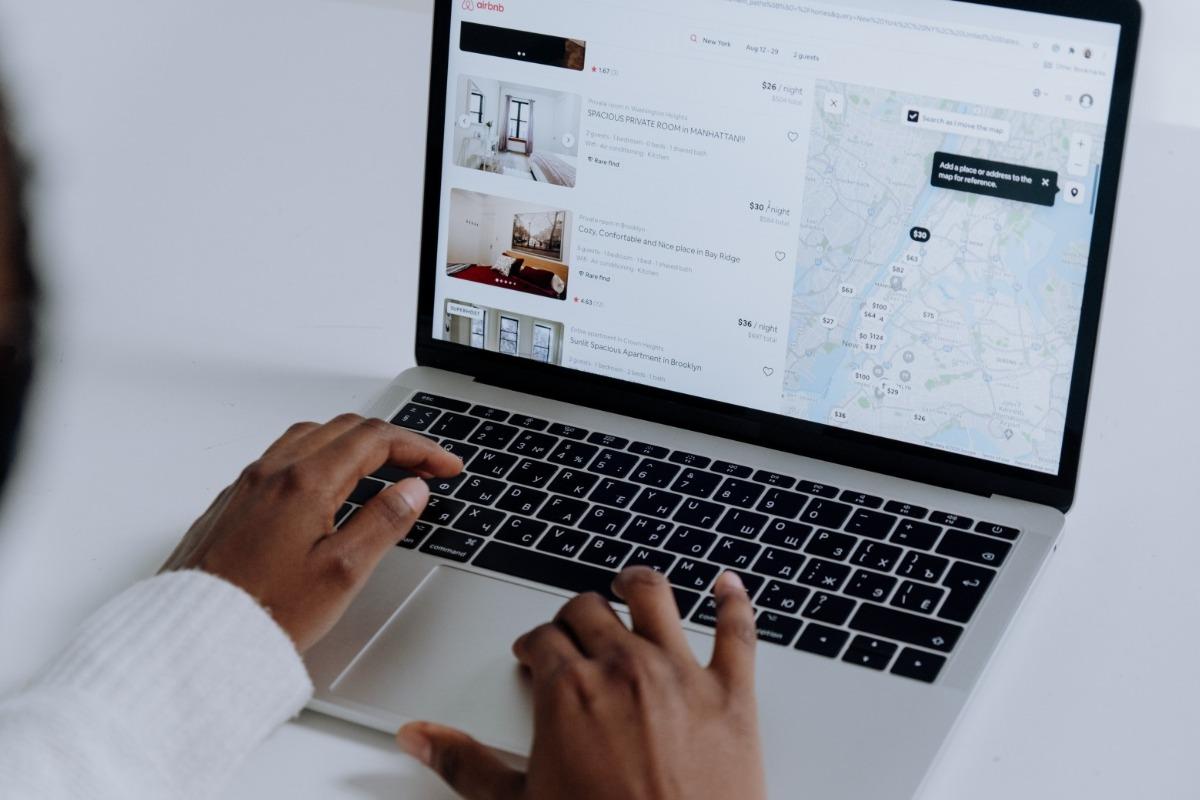Beginners in the cabin rental business might think that setting a nightly fee is easy. We wouldn't say so.
Arriving at the right fees for your cabin is an intricate, ongoing process. Many of the same factors that impact your demand will also influence what you can charge for your vacation home.
Any apt rental property manager in Pigeon Forge, Gatlinburg, and Sevierville TN knows this is a highly competitive realm with roughly 16,000 cabins.
To remain in the game, it's not enough to take great care of your cabin — you must also set the right price at the right time and fine-tune your revenue strategy holistically.
Understanding revenue management and its importance
Step 1: Pick a good pricing tool
Deciphering the intricate web of factors that impact your pricing is just like putting together a jigsaw puzzle with thousands of pieces. It requires a lot of effort.
Fortunately, technology is available to assist and there are many choices of revenue management and dynamic pricing software available online. Generally inexpensive, these solutions can take approximately 70-80% of the burden off your shoulders. They harness historical and real-time data and meticulously analyze similar cabin listings in your area to factor in immediate demand and reach the right pricing.
Let's break down (almost) all they can do:
They change prices according to local demand and occupancy trends.
They determine the most suitable pricing for both peak and off-peak periods.
They detect the ideal duration of a stay considering seasonal variations in demand.
They address isolated vacant days (aka “orphan days”) in your schedule.
They identify important local events that you might not know about that influence your pricing.
They help mitigate revenue loss (and can even earn you more money) by effectively handling sudden cancellations with rebooking.
With such an array of capabilities and options, picking the optimal tool to use in your business can prove challenging. Here's a summary of our discoveries over the years:
Beyond (formerly known as Beyond Pricing) is an excellent, user-friendly option for those seeking a mostly self-sustaining solution with a "set it and forget" approach. Typically, you can expect an expense of approximately 1% from your gross bookings with this tool.
PriceLabs offers considerable flexibility and customization options, while also providing you with substantial control over metrics. Also, it streamlines integration with other systems. Expect a monthly expense of around $10-20 for PriceLabs.
Wheelhouse also boasts an impressive list of integration options. However, it might not be the most suitable choice for a "set it and forget" strategy. Regular adjustments and optimizations, at least once a week, are likely necessary.
Keep in mind that the efficiency of any software relies on the user having at least a basic understanding of its function. If your goal is to maximize earnings, dedicating some time to understanding the task at hand is essential.
Step 2: Pinpoint your competitors

The process of identifying cabins like yours in terms of location, dimension, and amenities and grouping them for your reference is commonly known as defining your "comp set."
With a narrow selection in mind, it's easier to establish a baseline against which to measure your cabin's performance. The goal is to monitor your comp set and apply the adjustments to ensure your cabin remains competitive - whether it's investing in better amenities, or adjusting price, for instance.
There are also online tools you can use to build your comp set — including all three software we mentioned above — that will automatically gather data following the necessary parameters and keep you informed to decide on adjustments.
Still, it's very useful for investment property owners to know the fundamental aspects to consider when building a comp set.
Here are six of them:
- Amenities: evaluate the range and quality of your amenities and compare them with those offered by similar properties in your area.
- Size and bedroom count: take into consideration the size, the number of bedrooms, and the capacity of your cabin, drawing comparisons with similar listings.
- Location: look for properties near yours to assess market dynamics correctly.
- Performance: consider variables such as revenue, average daily rate (ADR), and occupancy when monitoring your comp set. The tools mentioned above offer a substantial part of the data you need about your competitors.
- Reviews: study the ratings and reviews of your comp set and then compare them with yours. This qualitative exercise is very revealing and helps you to understand how guests feel, beyond the data.
Comp sets are great tools for you to make informed decisions supported by data that can ultimately lead you to a competitive advantage.
Step 3: Define a baseline price
Defining your pricing metrics means defining the guidelines to determine the right nightly rates for your cabin according to different situations.
The start is your baseline price. Arriving at a number involves both your emotional perception and the factors discussed above. In this industry, even very low rates can be better than a vacant cabin (not always, but most times).
Still, many cabin owners have an emotional value in mind that they don't want to go below. That's okay, as long as the value is something realistic and that will not harm your business by making it too hard for people to book your cabin.
To stay competitive, many cabin owners like to set slow period rates as low as they can as long as they are not losing or burning money.
Whichever strategy you choose, it should not be a static one. You should always reassess it from time to time and, in any case, once you set a baseline price, avoid going below it as much as you can.
Step 4: Personalize your metrics and guidelines
A comprehensive pricing tactic follows specific guidelines according to different situations.
Here are a few examples:
Increase fees for dates outside your regular window: think about adjusting your prices for bookings that happen outside of the usual booking period, which normally spans from four to six weeks before the scheduled check-in date for cabins of one to five bedrooms in the Smoky Mountains.
Offer last-minute discounts: if you have many unoccupied dates within three weeks of the desired check-in date, you can start to apply discounts to promote last-minute reservations and fill in vacant gaps.
Offer orphan discounts: likewise, you can reduce the fee for bookings of short openings in your calendar, like one or two-day gaps that find themselves squeezed between longer bookings. We call them "orphan days."
Establish minimum and maximum stays: based on the correct data about your market, you can select the optimal duration for stays in your cabin, but be careful not to restrict guests too much. For instance, the typical stay duration in our market is 3.5 days, but there's considerable demand for 2-night stays. If you allow for the latter, you'll be catering to a large audience.
Holiday restrictions: most people travel during holidays, so extending your minimum stay period is generally a good idea. That will help avoid annoying vacant gaps in your calendar when your fee is at its highest and you'll also grant your cleaning staff more time to enjoy the same holidays with their families.
Offer weekday discounts: the interest in cabin stays naturally decreases during weekdays. Hence, to entice more bookings during these quieter days, you can consider offering weekday discounts.
Longer stay discounts: even if it's rare in our market for guests to book short-term cabins for longer than a week, it's a common practice in the industry at large to offer discounts for longer stays, of a week or more. This automatically helps you eliminate orphan days and also minimizes cleaning expenses.
Step 5: build rapport with the market
To gain initial traction up bookings and build rapport, many rental cabin managers like to look up similar cabins in their area and set their nightly fees for new cabins slightly below. As they get the hang of things, they will adjust prices as needed.
In the long term, though, keep the low prices for slow demand periods and focus on earning positive reviews to gain some margin for price experimentation.
Step 6: keep a close eye on how you are doing

As we've mentioned (several times), revenue management is a continuous process.
To maximize the potential of your investment cabin, you must establish a weekly routine to examine and evaluate your rates and occupancy. Always compare these with the prevailing market conditions and make adjustments accordingly.
Here are a few extra observations regarding revenue management:
If your vacancy rate for the 60/90-day period is lagging behind what you see in the market, you might want to reduce your base rate by 5 or 10%.
Similarly, if your 60/90-day vacancy rate exceeds the market average by more than 10%, you might want to consider increasing your base rate by 5 or 10%.
If your 60/90-day vacancy rate is satisfactory, but the 30-day vacancy rate is low, consider offering a discount for the following month to occupy your cabin.
Boost your cabin's success with a property manager
Managing revenue for your cabin may seem like an overwhelming task, but rest assured that professional help is available.
At Stony Brook, we are committed to maximizing your cabin's revenue potential by analyzing market trends and scrutinizing every detail.With a dedicated cabin manager at your disposal, you can easily outperform your competitors and achieve significant revenue growth. Contact us to learn more about how Stony Brook can help with revenue management.
We also welcome your suggestions on future blog topics. As a cabin management company in the Smoky Mountains, we are always eager to share our knowledge with other cabin owners. Reach out to us through the contact tab below.

.png)